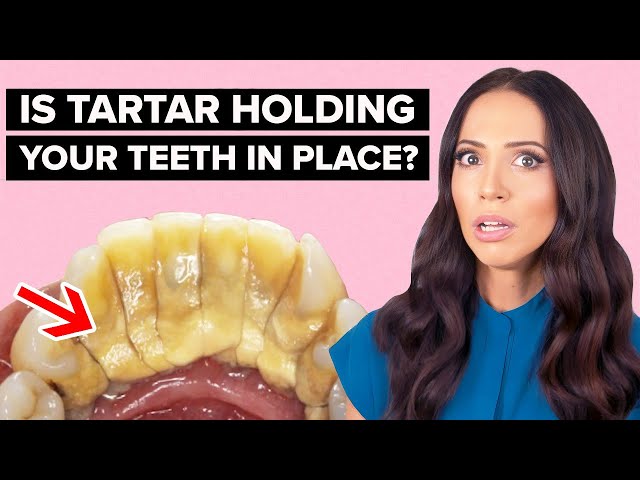Maintaining good oral hygiene is essential for preventing various dental problems, including the formation of it. Calculus bridge, a hardened plaque that forms above and below the gum line, can lead to gum disease and tooth decay if not addressed. This article provides practical tips for preventing it and ensuring better oral health.
Understanding
Calculus bridge, also known as tartar, is a calcified deposit that forms when plaque is not removed from the teeth through regular brushing and flossing. Over time, these deposits harden and create a rough surface that can trap more plaque and bacteria, leading to gum inflammation and other dental issues. The term "bridge" refers to the way calculus can span the space between teeth, forming a continuous layer of deposits.
The Importance of Prevention
Preventing it is crucial because once it forms, it can only be removed by a dental professional. Regular dental cleanings can help manage existing calculus, but good oral hygiene practices are key to preventing its formation in the first place. By understanding the causes and taking proactive steps, you can maintain healthier teeth and gums.
Daily Oral Hygiene Practices
Brushing your teeth at least twice a day is the first line of defense against plaque buildup. Use a fluoride toothpaste and a soft-bristled toothbrush to clean all surfaces of your teeth. Hold the brush at a 45-degree angle to your gums and use gentle, circular motions. Make sure to brush for at least two minutes each time, covering all areas of your mouth.
Flossing Regularly
Flossing is essential for removing plaque and food particles from between your teeth and under the gum line, areas that your toothbrush can't reach. Use about 18 inches of dental floss, winding most of it around your middle fingers and leaving a few inches to work with. Gently slide the floss between your teeth, curve it around each tooth, and move it up and down to remove debris. Aim to floss at least once a day.
Using Mouthwash
An antimicrobial mouthwash can help reduce plaque and prevent calculus bridge formation. Mouthwash reaches areas that brushing and flossing might miss, killing bacteria and freshening your breath. Look for a mouthwash that contains fluoride and is approved by dental associations. Use it as directed, usually after brushing and flossing.
Professional Dental Care
Regular dental checkups are vital for maintaining good oral health. Dentists can detect early signs of plaque buildup and remove any tartar that has already formed. Aim to visit your dentist every six months for a professional cleaning and examination. If you are prone to plaque buildup, your dentist may recommend more frequent visits.
Professional Cleanings
Professional cleanings, also known as prophylaxis, involve removing plaque and tartar from your teeth using specialized tools. This procedure helps prevent gum disease and keeps your teeth looking and feeling clean. Your dentist or dental hygienist will use scaling instruments to remove deposits from your teeth and polish them to prevent future plaque accumulation.
Dietary Considerations
A balanced diet is crucial for maintaining healthy teeth and gums. Eat a variety of fruits, vegetables, whole grains, lean proteins, and dairy products to provide your body with essential nutrients. Foods rich in calcium and vitamin D are particularly beneficial for your teeth. Avoid sugary and starchy foods, which can contribute to plaque formation.
Limiting Sugary and Acidic Foods
Sugary and acidic foods and beverages can erode tooth enamel and promote plaque buildup. Limit your consumption of sweets, sodas, and acidic fruits. If you do consume these foods, rinse your mouth with water afterward and wait at least 30 minutes before brushing your teeth to avoid damaging your enamel.
Staying Hydrated
Drinking plenty of water helps wash away food particles and bacteria, reducing the risk of plaque formation. Water also stimulates saliva production, which plays a crucial role in neutralizing acids and protecting your teeth from decay. Aim to drink at least eight glasses of water a day and consider using fluoridated water for added dental benefits.
Additional Tips for Preventing Calculus Bridge
In addition to regular brushing and flossing, using dental tools like interdental brushes and water flossers can help remove plaque from hard-to-reach areas. Interdental brushes are small, cone-shaped brushes that fit between your teeth, while water flossers use a stream of water to clean between your teeth and along the gum line.
Chewing Sugar-Free Gum
Chewing sugar-free gum after meals can help clean your teeth and stimulate saliva production. Saliva neutralizes acids and washes away food particles, reducing the risk of plaque buildup. Choose gum that contains xylitol, a natural sweetener that has been shown to inhibit the growth of bacteria.
Avoiding Tobacco Products
Tobacco use is a significant risk factor for it and other dental problems. Smoking and chewing tobacco can stain your teeth, increase plaque and tartar buildup, and lead to gum disease. Quitting tobacco can improve your oral health and reduce your risk of developing it.
Conclusion
Preventing calculus bridge is essential for maintaining good oral hygiene and overall dental health. By following a consistent oral care routine that includes proper brushing, flossing, and the use of mouthwash, you can reduce the risk of plaque buildup. Regular dental checkups and professional cleanings are also crucial for removing existing tartar and preventing further accumulation. Additionally, adopting healthy dietary habits, staying hydrated, and avoiding tobacco products can support your efforts to maintain a clean and healthy mouth. With these tips, you can prevent it and enjoy a brighter, healthier smile






Comments